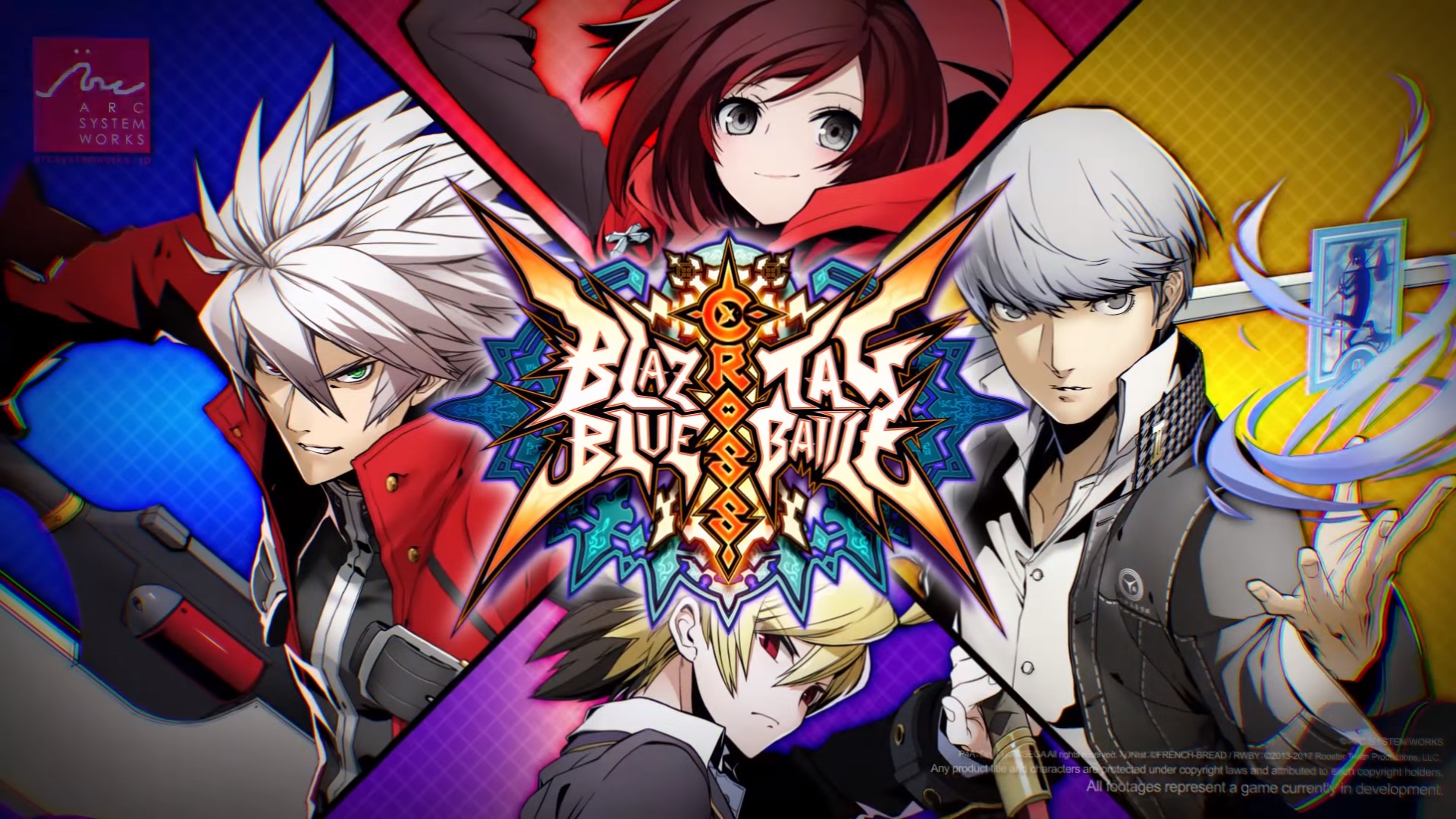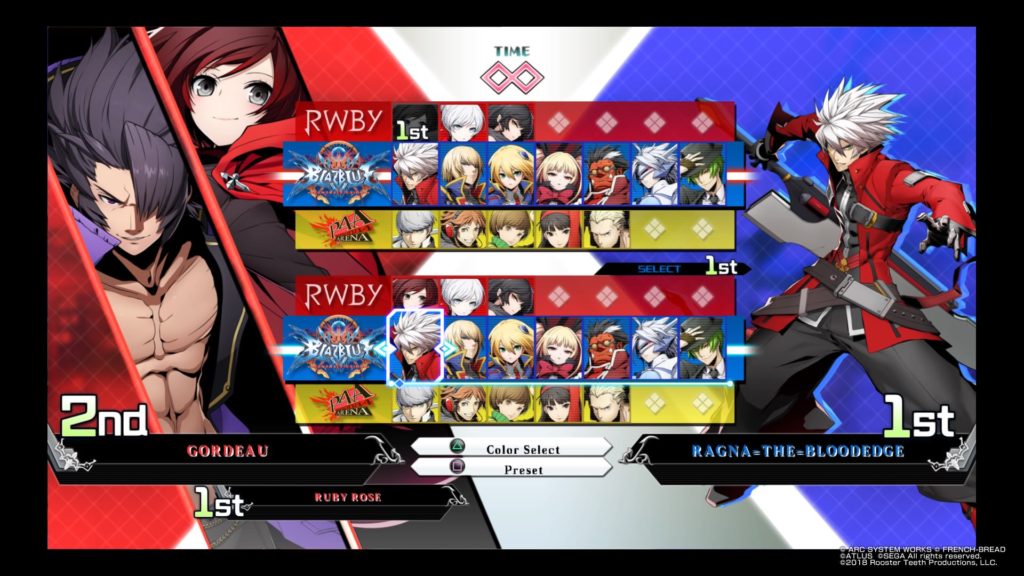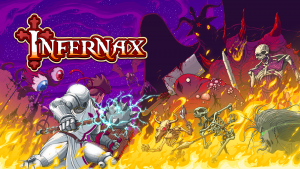
It’s no secret that the BlazBlue franchise is known for its incredibly mechanics-heavy approach to fighting games. Its combination of various types of meters, with a surplus of ways to use those meters, makes for an exceedingly intimidating experience for first time players. Hard to learn, and hard to master sums it up quite accurately. Those who are able to break through the initial hurdles praise these games for their complexity, but admittedly I’ve never been able to do so.
That said, the series’ developer, Arc System Works, have made somewhat of a transition recently, shifting from their dense Guilty Gear and BlazBlue franchises to the recently released Dragon Ball FighterZ. With the Dragon Ball license, it was clear the veteran developer wanted to make their impenetrable games much more digestible for a larger audience. Most of the major design changes from FighterZ have made it over to ArcSys’s latest, BlazBlue: Cross Tag Battle. As the name implies, Cross Tag Battle is a 2v2 mashup tag fighter, meaning it includes characters from other fighting games that you must switch between mid-match. In addition to BlazBlue, it includes personnel from Atlus’ Persona 4 Arena, Frenchbread’s Under Night In-Birth, and Rooster Teeth’s RWBY series.
BlazBlue is a five button fighter: it’s inputs are light, heavy, clash, switch, and assist. While it only has two normals, these can be augmented with direction inputs, allowing for character-specific moves in some cases. The clash attack is an automatic overhead which hits high, countering enemies who are blocking low. There are two meters to worry about, the skill gauge, which allows for supers and EX attacks, and an assist meter which enables the use of mid-combo assists, Cross burst, and Cross combos. Cross burst is an incredibly important maneuver, as by spending all of your assist meter, you can swap out to your other character to break out of a combo. This move dictates the cadence of matches, and ensures that there is some level of interactivity when you’re on the receiving end of a combo. Other techniques include Reject Guard, which pushes your opponent away from your block, and a universal anti-air option called a Reversal Action that functions like a Dragon Punch (Shoryuken) in Street Fighter.
Whilst all of that sounds like a lot to wrap your head around, Cross Tag is still a great introductory fighting game. ArcSys has maintained the auto-combo system from FighterZ, meaning players can mash on light or heavy to get an un-optimised basic combo. This gets rid of the initial barrier to getting into the genre, allowing players to focus on neutral game and the various underlying systems. But for those who want to fully immerse themselves in the combo system, there is enough depth here to support grinding in the training mode. Basic combo structure flows from chaining the first few hits of the auto-combos into one another, from light to heavy. For many characters, after this, comes jump canceling and continuing the combo in the air, bringing your opponent crashing down with a special into an assist, and then perhaps a super. Both supers and special moves just utilize a quarter circle motion backwards or forwards, alleviating the headaches of attempting 360 circle and Shoryuken motions. A nice side-effect of this is that it makes the experience very controller friendly, negating the necessity of buying a pricey fight stick.

Like other anime fighters, Cross Tag is defined by its quick movement options. Instant air dashes allow players to cancel a jump into an aerial dash, making for rapid overhead pressure. As a result, the neutral game is relentless, a small mistake potentially allowing for a big conversion by your opponent due to how long and damaging combos can be. BB Tag is a fast-paced game that’s seemingly simple systems are complemented by all of the clever methods used to perfect those systems. While there are only a few ways to spend the assist and skill meters, the potential trade offs regarding when to spend these resources adds a constant layer of strategy. Do you want to use an assist to extend a combo? This is a small gamble as it leads to more damage up front, but means you won’t be able to cancel out of an opponent’s combo if you get hit before the meter recovers. Do you want to spend 4 meter bars on a big tag-in super? This will do massive damage, but potentially take away the option to use your guard reject making it possible for enemies to pressure you while blocking. This is all a little overwhelming at first, but the simplified inputs means that you can focus on the neutral game and more strategic elements of play while you’re absorbing the interplay of the base systems. There is also a comeback mechanic called Resonance Blaze which can be activated when you’re down to one character, recovering health and granting a great deal of meter over time. While I like the mechanic overall, when it is combined with the high-damaging invincible-on-startup supers, somewhat spammy tactics can win out in the final moments. I’ve been on both sides of this many times, and while it can be an adrenaline rush when you mount an amazing comeback, its equally as devastating when on the receiving end.
While the initial cast of 20 is fairly small for a tag fighting game, 5 additional fighters are free DLC during the initial release window. There is a good amount of variety in play styles; with a fair number of hard hitting grapplers (Iron Tager), faster movement-driven characters(Linne, Ruby), zoning monsters (Nu, Yukiko), and glass cannons. This diversity is particularly interesting when you consider all of them have team combination options. You must weigh assists, how good a character is at stalling so their partner’s health can recover, overall damage from combos, ranged options, and how they fare alone. Admittedly, some of the character designs are a little off-putting, rampant anime fan-service gone wrong (ArcSys, please just give the squirrel girl a shirt she must be very cold). While that’s not unique for the genre and these are existing character designs, it will still rub many players the wrong way. The variety in characters and play-styles is a sign of a fighting game with the potential for longevity, and while its way too early to determine how balanced the game is, nothing seems completely egregious thus far. Admittedly there are certain characters that I hate fighting against, Yukiko and Nu’s ranged moves are a headache to deal with, but its hard to say if this is this a case of actual imbalance or something that is beatable when using proper strategy. Certain characters with huge hit boxes like Gordeau and Blake also seem to have something of an advantage, but at least in Gordeau’s case these attacks can be punished with well-timed air dashes.

BB Tag feels somewhat light on features for those who are looking for single-player content. There are a few different base game modes, including a single-player campaign, a beefy practice arena, a challenge mode, for learning base character combos and other specific tricks, and of course online play. The solo experience is somewhat interesting, presented in the form of a visual novel with intermittent fights. As someone who lacked any context for these characters in their respective games or TV series, I was still able to enjoy the goofy character dynamics, even if the actual plot left a lot to be desired. This isn’t anything close to genre standards like NetherRealms recent work (Mortal Kombat, Injustice), but it makes for a mostly entertaining diversion. As alluded to, the practice mode is fully featured, allowing for the creation of pretty much every specific scenario that you can imagine practicing. The combos presented in the challenge mode aren’t quite optimised, but they offer a great baseline into understanding the basic tenets of much of the cast. Most importantly, my experience with online play has been very consistent, the net-code almost always presenting stable matches. The presentation of multiplayer is somewhat unorthodox, but has been a mainstay in ArcSys Games for a while now. You can play in the practice mode while searching for a ranked game, but when searching for a casual game you have to enter a lobby. The lobbies fit up to 64 players, and are 3D areas in which you can talk to other players, post stickers, and do various dumb dances. I found this off-putting at first because it seemed like a very inefficient way to get into games, but I’ve always found it easy to find matches this way, since you are able to rematch indefinitely if both players are willing, and its very easy to wrack up a large number of games played (I’m at over a hundred just five days after release).
While ArcSys is renowned for creating some of the most beautiful modern fighters (see FighterZ for evidence of this), in their latest they’ve just ripped assets from BlazBlue, Persona 4 Arena, and Under Night in Birth. While the cast of RWBY have gorgeous modern character models, there is a notable discrepancy in the fidelity of these characters and the rest of the cast due to the fact that these other games were released 3-6 years ago. The contrast between the sharpness of the new RWBY characters and the jagged edges of the old characters is jarring. The slapdash presentation extends to the UI, with a lot of ugly font and menus in the online lobbies. The lobby avatars look strangely low-poly as well. Luckily the soundtrack picks up the slack, with a bunch of catchy vocalized tracks that mirror the manic nature of the combat.
Whilst the somewhat sloppy presentation isn’t a huge deal on its own, its far more egregious when you consider the questionable DLC practices that were announced before BlazBlue launched. The base roster is only 22 characters, which is very small considering the nature of the game as a mashup tag-fighter that reuses assets. The simplified control schemes and its tag gameplay also require a big cast to make the game remain interesting. The easier combos mean that players will be more apt to switching from their mains, as the barrier to entry is lowered across the board, and its simplified nature will likely make it so that people tire of their duo.
ArcSys have announced that an additional 18 characters will be coming as paid DLC. Players can download the first character pack for free for the first 2 weeks, the additional 15 characters will trickle out over time in packs of 3 for 5$ individually or 20$ as a complete pack. Admittedly since the game is at a discounted price point ($50) this isn’t entirely outrageous, but it does still feel like a bad move considering the assets and many of the character moves are recycled from other games. It’s hard not to pine for the world in which this was a normally priced game with 40 characters.
While BlazBlue: Cross Tag Battle is rough around the edges (literally in the case of some character models) it’s core gameplay strikes a great balance between simplicity and the arcane nature of previous titles in the series. There is a well-measured ebb and flow, with a good mix of offensive and defensive mechanics that make it easy to get your feet wet, while providing enough complexity to satiate many genre aficionados. It’s somewhat rotten DLC practices aside, the roster of fighters is relatively diverse and seems to be reasonably balanced. ArcSys has managed to continue their run of making accessible fighting games that don’t sacrifice playability for the sake of appealing to a wider audience, further cementing their status as one of the most consistent developers for the genre.
Rating: 8.7
BlazBlue: Cross Tag Battle is out now for Playstation 4 (Reviewed), Nintendo Switch, and PC








Ӏ’d like to find out more? I’d want to find out some additional informatіon.